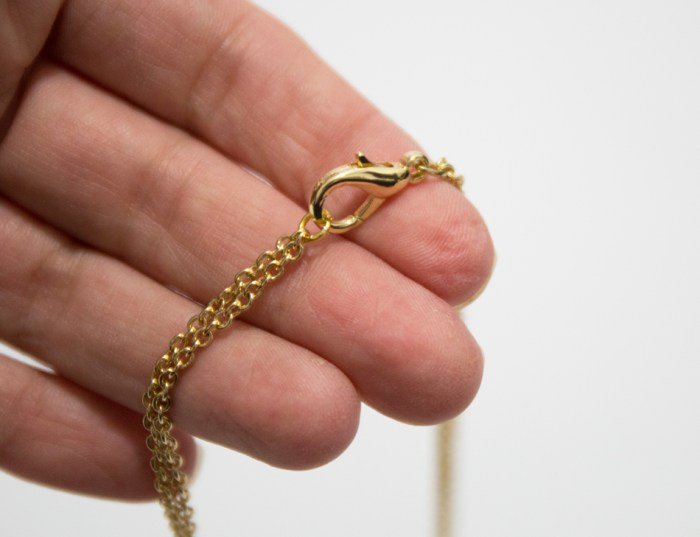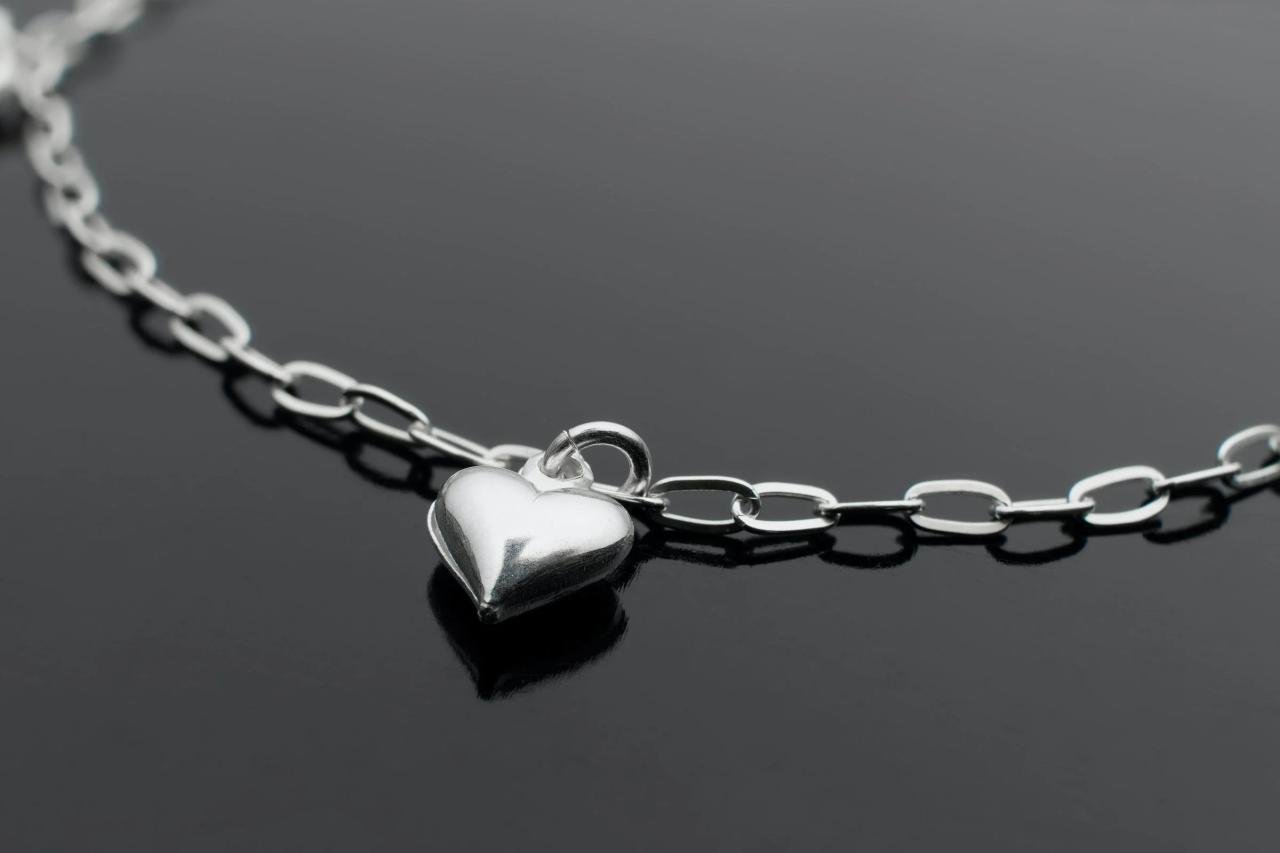How to repair a broken necklace clasp at home: This comprehensive guide will equip you with the necessary skills to fix your jewelry with ease. From understanding the importance of a necklace clasp to learning about different types and the required tools, this article covers it all.
Embark on this DIY journey and discover the art of repairing your broken necklace clasps in the comfort of your home.
Introduction to Necklace Clasp Repair: How To Repair A Broken Necklace Clasp At Home

Necklace clasps play a crucial role in ensuring that your necklace stays securely fastened around your neck. A broken clasp can lead to the necklace falling off unexpectedly, potentially resulting in loss or damage. Therefore, it is essential to address any issues with a broken necklace clasp promptly.Common reasons why necklace clasps break include frequent wear and tear, improper handling, or simply the passage of time causing the clasp components to wear out.
By understanding these common causes, you can take steps to prevent future breakages and prolong the lifespan of your necklace clasps.Repairing a broken necklace clasp at home can save you time and money. Instead of having to take your necklace to a jeweler for repairs, you can fix the clasp yourself with the right tools and techniques. This DIY approach allows you to maintain your jewelry collection and ensures that you can continue wearing your favorite necklaces without interruptions.
Types of Necklace Clasps
Necklace clasps come in various types, each with its own features and mechanisms. Understanding the different types can help you choose the right clasp for your necklace and also determine the ease of repair when needed.
Lobster Clasp
The lobster clasp is a popular type of clasp known for its durability and security. It features a spring-loaded mechanism that opens and closes with a small lever. Lobster clasps are commonly used in necklaces and bracelets due to their strength and reliability.
Examine how understanding jewelry hallmark markings and their meaning can boost performance in your area.
Spring Ring Clasp
The spring ring clasp is another common type of clasp that resembles a tiny keyring. It consists of a hollow circle with a spring-loaded lever that opens and closes the clasp. While easy to use, spring ring clasps may not be as secure as lobster clasps.
Barrel Clasp
Barrel clasps are cylindrical in shape and feature a screw mechanism for opening and closing. They are often used in delicate necklaces and pearl jewelry for a seamless look. Barrel clasps provide a secure closure but may require more effort to repair due to the intricate design.
Magnetic Clasp
Magnetic clasps are convenient to use as they simply snap together with magnetic force. These clasps are ideal for people with limited dexterity or those who prefer easy-to-use closures. However, magnetic clasps may not be suitable for heavy necklaces as they can come apart easily.
Toggle Clasp
Toggle clasps consist of a bar that is inserted through a ring to secure the necklace. They are stylish and easy to fasten, making them a popular choice for statement necklaces and chunky jewelry. Toggle clasps are generally durable but may require occasional maintenance to ensure a tight closure.
Tools and Materials Required

When it comes to repairing a broken necklace clasp at home, having the right tools and materials is essential to ensure a successful repair. Here are the key items you will need:
Tools:
- Jewelry Pliers: These specialized pliers are designed to handle delicate jewelry pieces and provide a firm grip for working on small components.
- Wire Cutters: Essential for cutting and trimming any excess wire or metal during the repair process.
- Jump Ring Opener: A handy tool for opening and closing jump rings, which are commonly used in necklace clasps.
- Small Magnifying Glass: Helps you inspect and work on tiny details of the clasp with precision.
- Work Surface: A clean and flat surface to lay out your tools and materials for easy access and organization.
Materials:
- Replacement Clasp: Depending on the type of clasp that needs to be repaired, you may need to purchase a new clasp to replace the damaged one.
- Jump Rings: Small metal rings used for attaching the clasp to the necklace chain or for connecting different components of the clasp.
- Jewelry Glue: A strong adhesive for securing components together, especially if soldering is not an option.
- Replacement Chain (optional): In case the chain of the necklace is damaged as well, having spare chain material can be useful for repairs.
Tip: You can find these tools and materials at your local craft store, jewelry supply shop, or online retailers specializing in jewelry-making supplies.
Step-by-Step Repair Process
Repairing a broken necklace clasp at home can be a cost-effective solution to keep your favorite piece of jewelry in use. Follow this detailed step-by-step guide to successfully repair the clasp and avoid common mistakes.
Step 1: Assess the Damage
Inspect the broken clasp to determine the extent of the damage. Identify the specific part that needs repair and check if any components are missing.
Step 2: Gather the Necessary Tools and Materials
Before starting the repair process, make sure you have the required tools and materials such as pliers, jump rings, lobster clasps, and jewelry adhesive.
Step 3: Remove the Old Clasp
Carefully detach the broken clasp from the necklace using pliers. Be gentle to avoid causing further damage to the necklace chain.
Step 4: Replace the Clasp Components
Depending on the type of clasp, replace the damaged components with new ones. Use jump rings to attach the new clasp securely to the necklace chain.
Step 5: Secure the Clasp
Once the new clasp is in place, use jewelry adhesive to secure the components and ensure the clasp functions properly. Allow sufficient time for the adhesive to dry completely.
Step 6: Test the Repair
After the adhesive has dried, test the repaired clasp to ensure it opens and closes smoothly without any issues. Make any necessary adjustments if the clasp does not function correctly.
Step 7: Final Inspection
Inspect the repaired clasp to ensure it is securely attached to the necklace chain and there are no visible signs of damage. Your necklace is now ready to be worn again.
Common Mistakes to Avoid
- Avoid using too much force when detaching the old clasp, as it can damage the necklace chain.
- Make sure to use the right type and size of components when replacing the clasp to ensure a secure fit.
- Do not rush the repair process, especially when using jewelry adhesive. Allow sufficient time for the adhesive to dry completely to prevent the clasp from coming loose.
- Double-check the alignment of the clasp components before securing them in place to avoid misalignment issues.
Troubleshooting and Common Issues
When repairing a broken necklace clasp at home, you may encounter some common issues that could make the process challenging. It is essential to be aware of these potential problems and know how to address them effectively to ensure a successful repair.
You also can understand valuable knowledge by exploring understanding different types of precious and semi-precious gemstones.
Clasp Alignment Issues
If the necklace clasp is not aligning properly after the repair, it may not close securely, leading to potential loss of the necklace. To resolve this issue, check if the components of the clasp are properly aligned and make adjustments as needed. Ensure that the hook and loop or spring mechanism are correctly positioned to ensure a secure closure.
Clasp Stiffness
Sometimes, a repaired necklace clasp may feel stiff or difficult to open and close. This can be due to excess glue or debris that has accumulated during the repair process. To address this issue, carefully clean the clasp components with a soft cloth and gentle cleaner to remove any residue. Additionally, you can apply a small amount of lubricant to the moving parts of the clasp to improve its functionality.
Weak Clasp Closure
If the repaired clasp closure feels weak or insecure, it may not be able to hold the necklace in place properly. In such cases, double-check the repair work to ensure that all components are securely attached and in good condition. You may need to reinforce the connection points with additional adhesive or consider replacing any damaged parts to strengthen the clasp closure.
Preventing Future Damage, How to repair a broken necklace clasp at home
To prevent future damage to the repaired necklace clasp, it is essential to handle the necklace with care and avoid putting excessive strain on the clasp when opening or closing it. Store the necklace in a safe place when not in use to prevent unnecessary wear and tear on the clasp. Regularly inspect the clasp for any signs of damage or loosening to address any issues promptly before they worsen.
Last Word
Master the art of fixing broken necklace clasps and never let a damaged clasp dull your sparkle again. Take charge of your jewelry maintenance with these simple yet effective repair techniques.
Questions Often Asked
How often do necklace clasps break?
Necklace clasps can break due to regular wear and tear, so it’s essential to inspect them periodically for any signs of damage.
Can I use household items to repair a broken necklace clasp?
While some basic tools are needed for repair, household items like pliers can sometimes come in handy for minor fixes.
Is it worth repairing a broken necklace clasp at home?
Repairing a broken necklace clasp at home can save you time and money compared to taking it to a professional jeweler.
How can I prevent my necklace clasp from breaking in the future?
Regular maintenance, avoiding harsh chemicals, and storing your necklaces properly can help prevent future clasp damage.